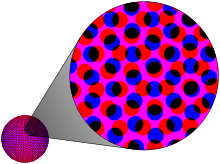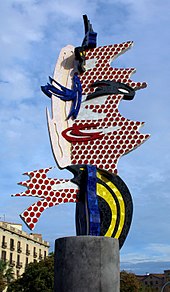Benjamin Henry Day, Jr (7 Mar 1838 – 30 Aug 1916), inventor of the Ben-Day process, a printing and photoengraving technique dating from 1878, an illustrator, and printer.
Day was born in West Hoboken, New Jersey to Benjamin Henry Day (1810–1889) and Evelina Shepard (b. 1811). His father was an American newspaper publisher best known for founding the New York Sun, the first penny press newspaper in the United States in 1833.
He had three siblings; Henry (b. 1832), Mary Ely Day (1833–38), and Clarence Shephard Day (1844–1927), who was a stockbroker and father of author Clarence Shephard, Jr.
He would go on to study in Paris, and after returning to the United States worked for Leslie’s, Harper’s Weekly and similar publications. He also a frequent contributor to the humorous weekly magazine Vanity Fair.
 Ben-Day Process
Ben-Day Process
The Ben-Day process is a printing and photoengraving technique dating from 1878. While the Ben-Day process is commonly described in terms of dots (“Ben-Day dots”), other shapes were used, such as parallel lines, textures, irregular effects, or waved lines.
Depending on the effect, color, and optical illusion needed, small colored dots are closely spaced, widely spaced, or overlapping. Magenta dots, for example, are widely spaced to create pink. The Ben-Day Process is used in screenprinting as a graphic alternative to using a halftone tint. Screenprinters also use Ben-Day dots in the four process colors (cyan, magenta, yellow and black) to inexpensively create shading and secondary colors such as green, purple, orange, and flesh tones on point-of-purchase, posters, and fabrics.
The Ben-Day dots process differs from the halftone dots process in that the Ben-Day dots are always of equal size and distribution in a specific area. In the pre-computer age, to apply the dots to a drawing the artist would purchase transparent overlay sheets from a stationery supplier. The sheets were available in a wide variety of dot sizes and distribution, which gave the artist a range of tones to use in the work. The overlay material was cut in the shapes of the tonal areas desired—i.e. shadow or background or surface treatment—and rubbed onto the specific areas of the drawing with a burnisher. When photographically reproduced as a line cut for letterpress printing, the areas of Ben-Day overlay provided tonal shading to the printing plate. Today, the effect is easily duplicated in software, such as Adobe Photoshop and Adobe Illustrator.

The use of Ben-Day dots was a hallmark of American artist Roy Lichtenstein, who enlarged and exaggerated them in many of his paintings and sculptures. Other illustrators and graphic designers have used enlarged Ben-Day dots in print media for a similar effect.
There is no record of when Day first began using the Ben-Day Process, but he filed for a patent on the process in 1878, and the following year, was granted US Patent No. 214,493.
Personal Life
Day’s first marriage was to Rebecca Augusta Avery (27 Jun 1844 – 10 Jan 1926), with whom he had two daughters (Florence and Helen). The marriage ended in divorce.
He married Maria Theresa Miller around 1859, who died in 1875. They had two sons, Benjamin H. (11 Apr 1860 – 17 Oct 1905) and Charles Shepherd (1866 – 26 Jan 1900).
In 1878, Day was remarried to Rebecca Augusta Avery.
In 1908, Day moved to Summit, New Jersey and built a large studio. He died at his home in Summit on 30 Aug 1916, at the age of 78.